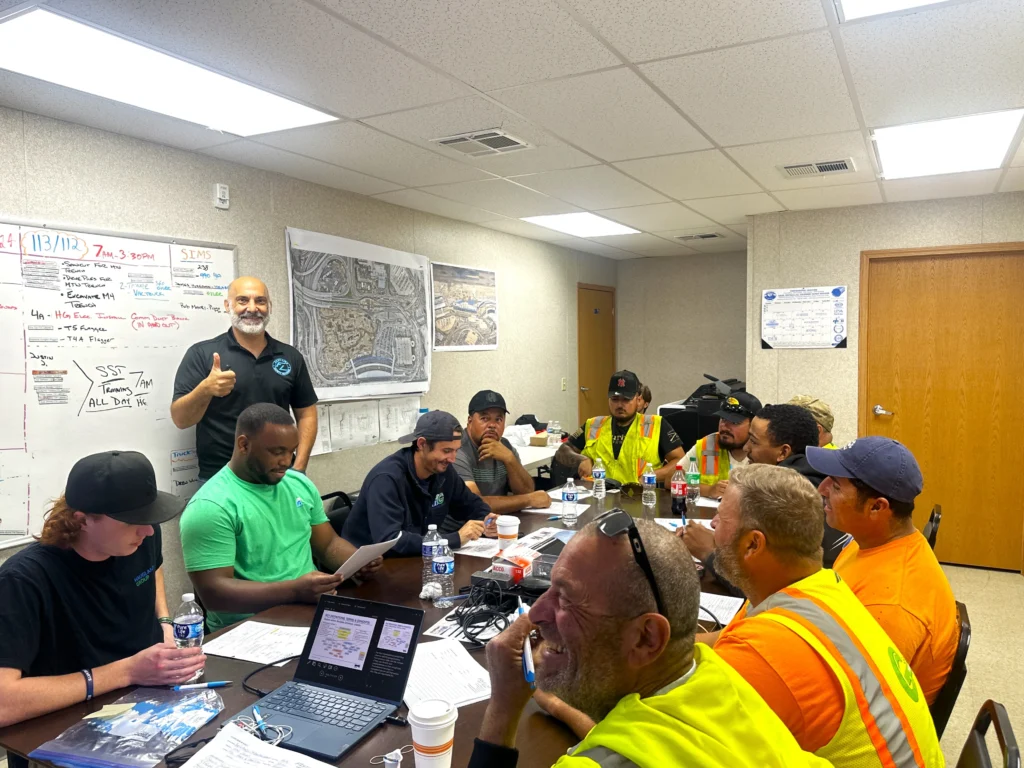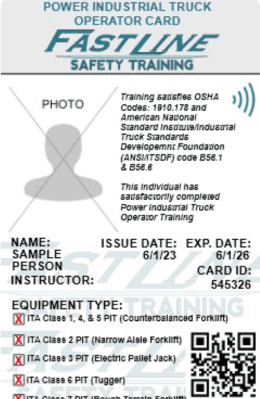
Course Duration
2 Hours
Course Session
1 Session
Language
English, Spanish
Training Type
Classroom Training
Course Overview
This 2-hour ladder safety course provides essential training for anyone who uses ladders in their work. You will learn about ladder selection, inspection, setup, and safe climbing techniques. This course emphasizes practical skills and real-world scenarios, helping you develop safe work habits and minimize the risk of ladder accidents.
The goal of this course is to promote safety, correct ladder selection, proper inspection, and appropriate lock-out tagout procedures to protect user and other workers.
Fast Line Safety Training delivers high-quality, hands-on training at your location and provides the industry’s preferred operator card.
Additional Course Information
What you'll learn
- Proper ladder selection and inspection
- Safe ladder setup and use
- Three-point contact rule and other climbing safety practices
- Common ladder hazards and how to avoid them
- Emergency procedures in case of a ladder accident
CEU Credits Earned
0.2
Continuous Education Units
Who Should Take this course?
This 2-hour ladder safety course is essential for anyone who uses ladders in their work, including:
- Construction workers
- Maintenance personnel
- Industrial workers
- Landscapers and arborists
- Painters and decorators
- Homeowners and DIY enthusiasts

Learning Outcomes
By the end of this course, Students will have an understanding to:
- Realize the number of injuries and deaths related to unsafe ladder use.
- Comprehend and identify the fall hazards relating to improper ladder use
- Recall proper ladder use.
- Recite standard job site ladder rules and understand how different ladders work and their uses.
- Know the standard ladder terms.
- Be able to choose the correct ladder for the job.
- Comprehend the complexities of the different climbing angles.
- Recite ladder precautions and warnings.
Pricing
Group
Minimum 5 person per class-
We Come to You
-
Schedule Flexibility
-
Hands-on Training
Inquire about setting up a private class for your team and ask about group discounts.
To successfully complete the training, students must:
- Earn a minimum score of 75% on the final evaluation.
- Complete 100% of the required course content.
- Completion of required pre-and post-quiz assessment
- Actively participate in all written and practical learning activities.
- Completion of Continuing Education and Training Registration Form
Please note that no make-up time will be provided for missed assignments or activities.
The Preferred Equipment Operator Card

QR Code/ NFC Technology
Digital ID Card: Quickly scan your card with any smartphone camera to experience the convenience of your digital identification profile.
Blockchain Protected
Blockchain-protected: Experience the next generation of security. Leveraging the power of blockchain technology, your cards are encrypted and tamper-proof, ensuring your information is always safe.
ID Cards with Face Photo
Full-resolution ID Cards: Fast Line Safety Training issues A standard identification card featuring a full-color photograph of the individual.
Completion cards are valid for 3 years and in all 50 states.
We are the only providers issuing such permanent cards.
Book your next training course with us.
Fill out the form below or call us at (631) 393 – 6755
to set up your training session!
l out the form below or
call us at (631) 393 – 6755
to set up your training session!

Frequently Asked Questions
Why is ladder safety training important?
Ladder accidents are a leading cause of workplace injuries. This training emphasizes safe ladder selection, inspection, setup, and use, minimizing the risk of falls and injuries.
Who should take this ladder safety course?
This course is essential for anyone who uses ladders in their work, including construction workers, maintenance personnel, painters, roofers, tree trimmers, and anyone else who regularly climbs ladders.
Are there any specific regulations or standards covered in this course?
Yes, the course will cover relevant industry standards and regulations, such as OSHA regulations, to ensure compliance and best practices.




